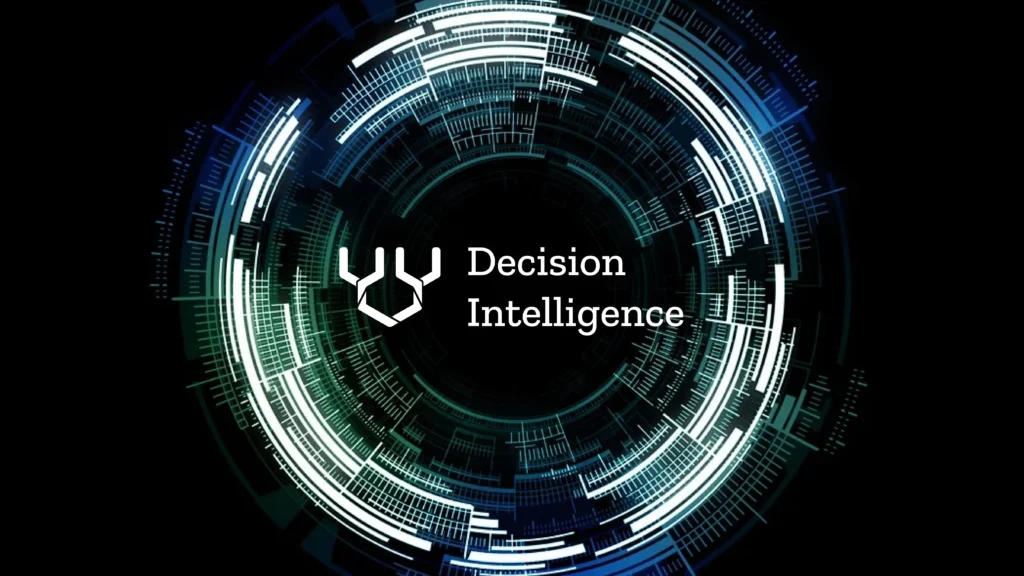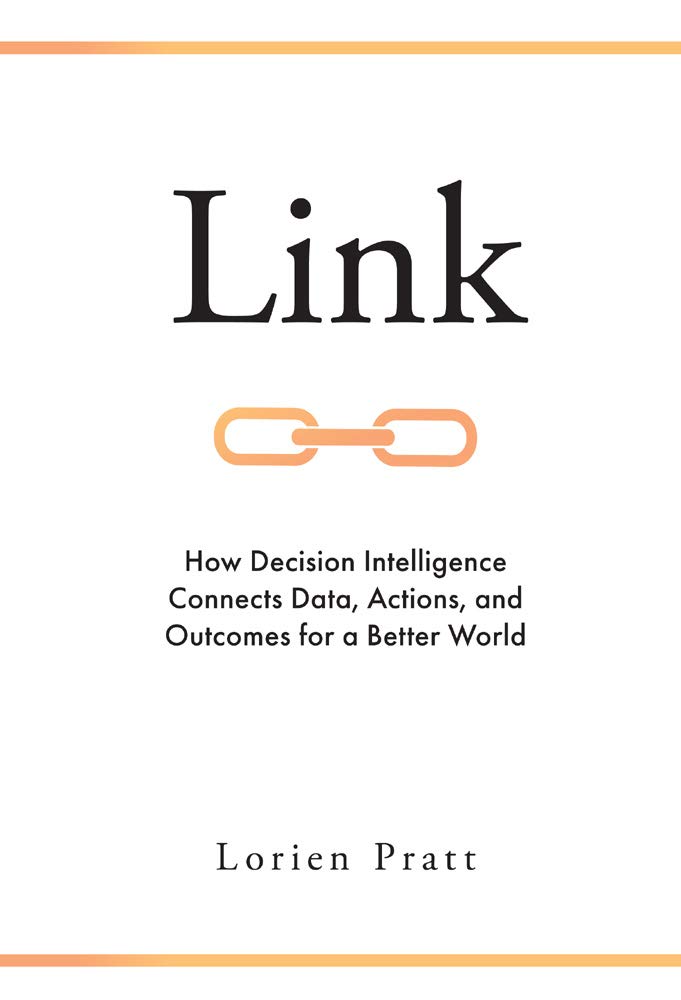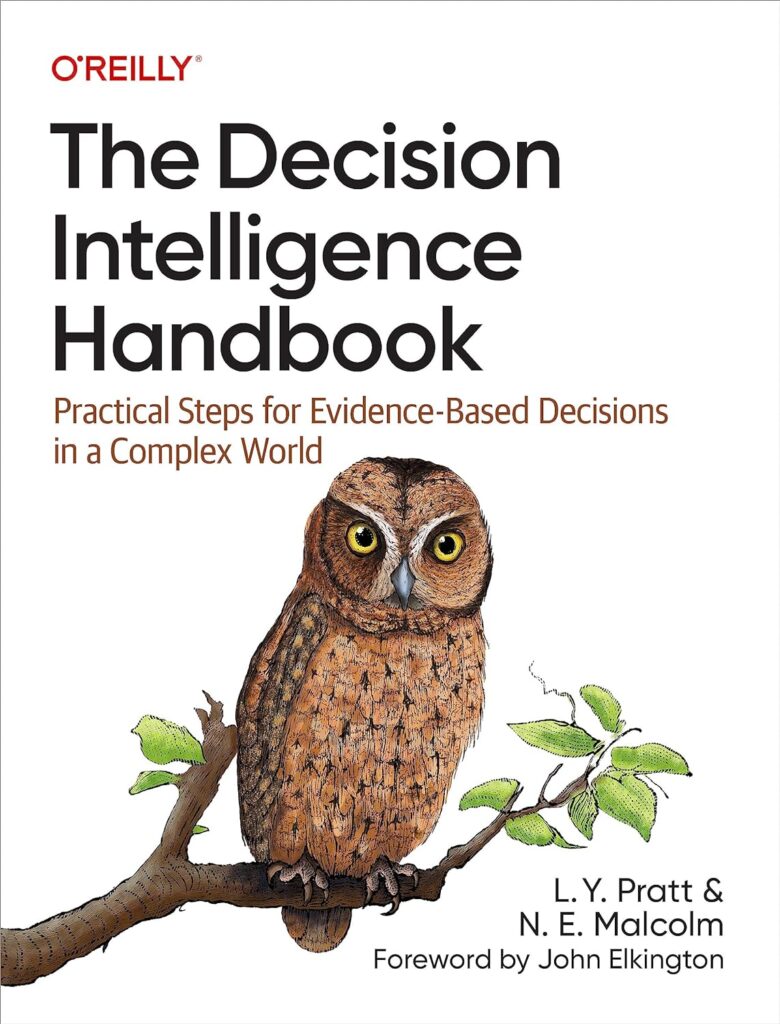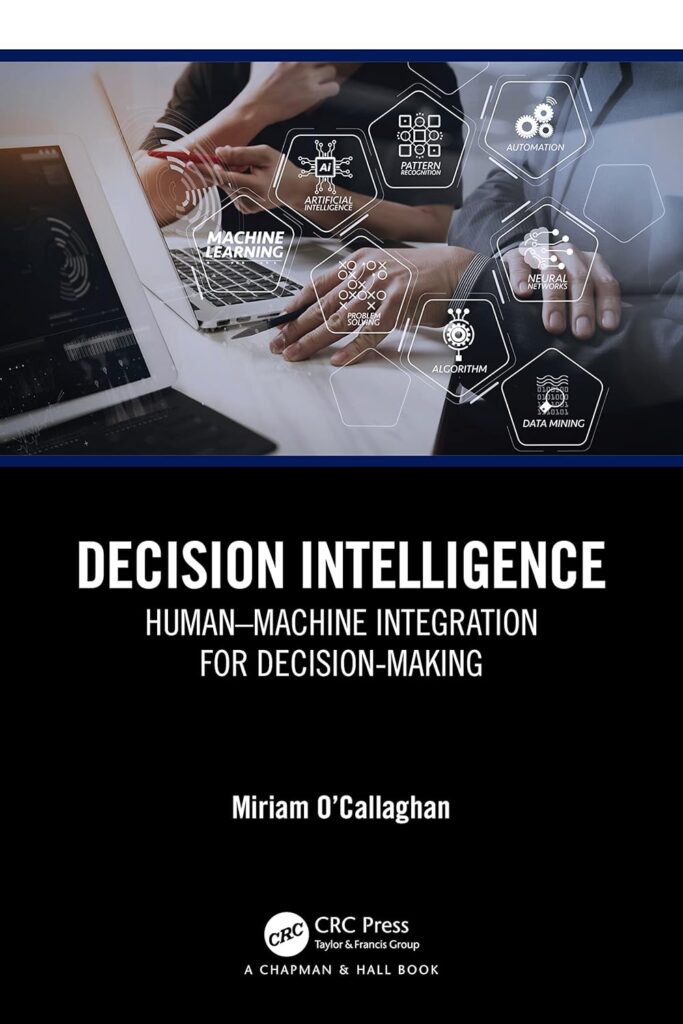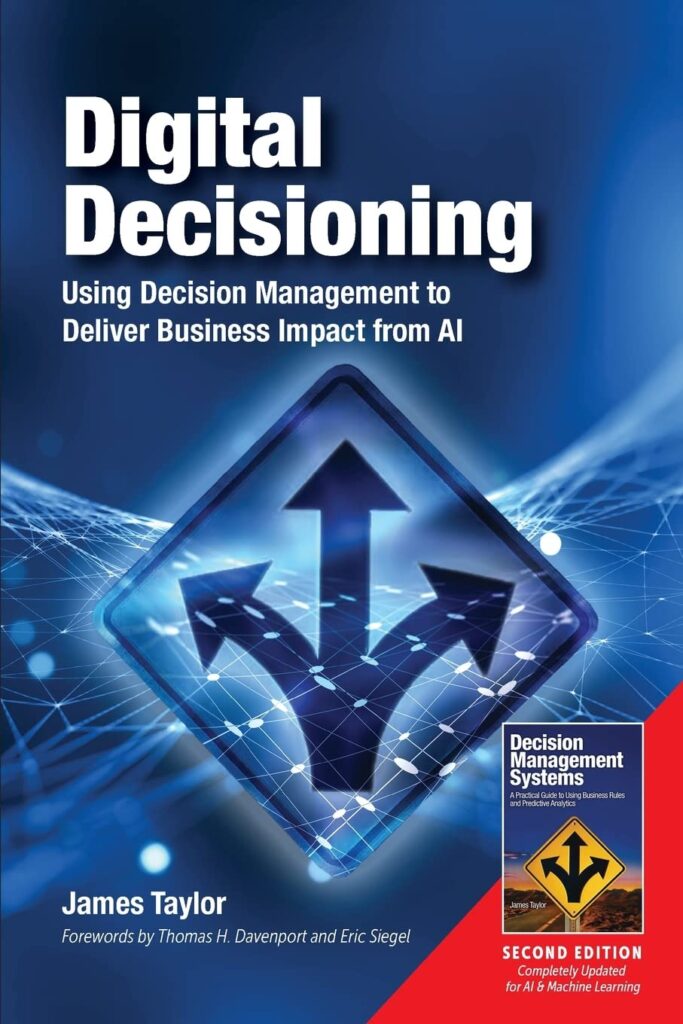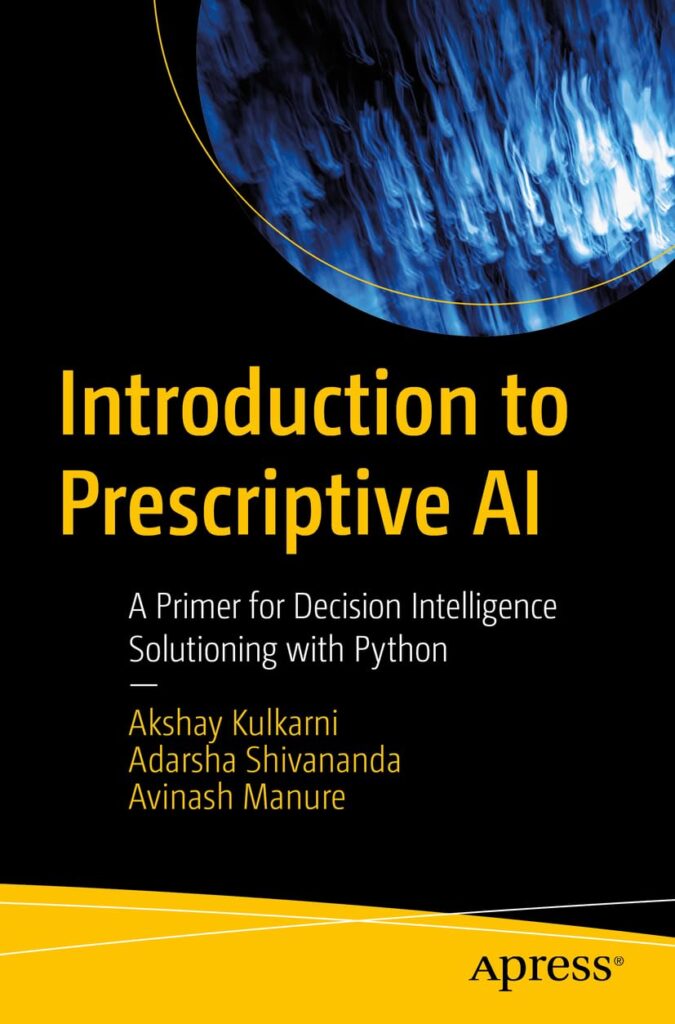Decision Intelligence Recommended Reading
Decision intelligence is a multidisciplinary field that integrates data science, behavioral science, decision theory, and AI into an outcome-driven decision making approach that plays a pivotal role in helping organizations make informed and effective decisions.
Central to decision intelligence is the strategic use of AI for calculating outcome probabilities, enabling decision-makers to assess risks, optimize resource allocation, and enhance decision-making processes.
The following are recommended reading resources that explain the field from multiple perspectives and provide insights and practical guidance for professionals looking to leverage AI in their decision-making strategies.
This list will be updated regularly as we read and review new additions to the ever-growing body of literature on the field of DI.
Dr. Lorien Pratt co-invented DI together with Mark Zangari in 2010 and wrote the first book published on the subject. This is a great starting point for a macro view of what the field of DI is all about. Although it doesn’t delve into the day to day nuts and bolts of implementing DI, it provides a great frame of understanding for how to apply the basic principles.
From the Amazon page:
Why aren’t the most powerful new technologies being used to solve the world’s most important problems: hunger, poverty, conflict, inequality, employment, disease? What’s missing? From a pioneer in Artificial Intelligence and Machine Learning comes a thought-provoking book that answers these questions. In Link: How Decision Intelligence Connects Data, Actions, and Outcomes for a Better World, Dr. Lorien Pratt explores the solution that is emerging worldwide to take Artificial Intelligence to the next level: Decision Intelligence.
Decision Intelligence (DI) goes beyond AI as well, connecting human decision makers in multiple areas like economics, optimization, big data, analytics, psychology, simulation, game theory, and more. Yet despite the sophistication of these approaches, Link shows how they can be used by you and me: connecting us in a way that supercharges our ability to meet the interconnected challenges of our age.
Pratt tells the stories of decision intelligence pioneers worldwide, along with examples of their work in areas that include government budgeting, space exploration, emerging democracy conflict resolution, banking, leadership, and much more.
Link delivers practical examples of how DI connects people to computers and to each other to help us solve complex interconnected problems. Link explores a variety of scenarios that show readers how to design solutions that change the way problems are considered, data is analyzed, and technologies work together with people.
Technology and academics has accelerated beyond our ability to understand or effectively control them. Link brings technology down to earth and connects it to our more natural ways of thinking. It offers a roadmap to the future, empowering us all to make practical steps and take the best actions to solve the hardest problems.
Dr. Lorien Pratt’s second book expounds on the concepts first introduced in Link and gets into the nuts and bolts of the core DI methodology. Learn how to put decisions first, then connect human experience, data, and AI in a logically structure framework using causal decision diagrams (CDD). As one would expect from an O’Reilly handbook this is the practical guide to implementing better decision making in your organization.
Diagrams and practical use cases provide a hands-on framework that you can start with today, requiring little more than a notebook and pencil or whiteboard.
Our only complaint with this book is that it doesn’t provide detailed descriptions of exactly which AI algorithms are applicable in which scenarios, but there’s only so much one can fit into one book so perhaps these are planned for future volumes. In the meantime, you can learn more by taking Dr. Pratt’s workshops at: https://www.quantelliacourses.com/
From the Amazon page:
Decision intelligence (DI) has been widely named as a top technology trend for several years, and Gartner reports that more than a third of large organizations are adopting it. Some even say that DI is the next step in the evolution of AI. Many software vendors offer DI solutions today, as they help organizations implement their evidence-based or data-driven decision strategies.
But until now, there has been little practical guidance for organizations to formalize decision making and integrate their decisions with data.
With this book, authors L. Y. Pratt and N. E. Malcolm fill this gap. They present a step-by-step method for integrating technology into decisions that bridge from actions to desired outcomes, with a focus on systems that act in an advisory, human-in-the-loop capacity to decision makers.
This handbook addresses three widespread data-driven decision-making problems:
How can decision makers use data and technology to ensure desired outcomes?
How can technology teams communicate effectively with decision makers to maximize the return on their data and technology investments?
How can organizational decision makers assess and improve their decisions over time?
Next, for a technical deep dive into which AI algorithms are applicable to common DI use cases we recommend this book. Miriam O’Callaghan does a good job of explaining the need to put the decision first using human experience, then connect data and AI resulting in the optimum human-machine integration for decision making.
From the Amazon page:
Revealing the limitations of human decision-making, this book explores how Artificial Intelligence (AI) can be used to optimize decisions for improved business outcomes and efficiency, as well as looking ahead to the significant contributions Decision Intelligence (DI) can make to society and the ethical challenges it may raise.
From the theories and concepts used to design autonomous intelligent agents to the technologies that power DI systems and the ways in which companies use decision-making building blocks to build DI solutions that enable businesses to democratize AI, this book presents an impressive framework to integrate artificial and human intelligence for the success of different types of business decisions.
Replete with case studies on DI applications, as well as wider discussions on the social implications of the technology, Decision Intelligence: Human–Machine Integration for Decision Making appeals to both students of AI and data sciences and businesses considering DI adoption.
Although business-process heavy, James Taylor’s second edition has been reworked to include AI models for decision intelligence. Our recommendation is to read this book keeping in mind the best practice of starting with the desired outcome, then mapping actions and intermediaries, and finally focusing on the data and business processes.
From the Amazon page:
“I’ve worked as a C-level executive in multiple insurance companies and engaged countless strategy consultants, IT consultants and technology vendors over the past two decades. This book describes the only approach that has actually allowed me to operationalize predictive models and deliver real ROI!”
Digital Decisioning ensures your systems act intelligently on your behalf, making precise, consistent, real-time decisions at every touch point. It operationalizes machine learning and artificial intelligence, so you can make the best possible decision, every time. It uses business rules to guarantee the agility, transparency and compliance that established companies and regulated industries demand. Focusing only on decision-making, it supports continuous learning and improvement.
Digital Decisioning applies machine learning and artificial intelligence at scale to automate the decisions essential for more profitable, more customer-centric and more digital business operations.“Essential reading for COOs looking to rigorously improve automation through AI.”
Based on dozens of successful projects around the word, this book lays out the basic elements of the approach in a practical how-to guide. Aimed at managers, not technical teams, this book will focus your efforts to apply machine learning, artificial intelligence and predictive analytics. It emphasizes practical “do this next” advice delivered in non-technical terms, describing the business value and impact of critical technologies without diving into technical detail. Stories of real implementations, real companies, show what can be done.
A completely updated version of an established and popular book on Decision Management, this second edition has forewords by leading analytic experts, Tom Davenport and Eric Siegel.
“James has been at the forefront of decision management techniques for years. Anyone trying to automate and embed analytics to support decisions should read this book.”–Bill Franks, Chief Analytics Officer, International Institute for Analytics, speaker, and author.“
An absolute masterclass in analytics from one of the great masters himself. Nothing but solid knowledge, sage advice, and great examples without an ounce of hyperbole or fluff.”–Doug Laney, Principal Data Strategist with Caserta, and best-selling author of ‘Infonomics’.
For an overview of the differences between Descriptive AI, Diagnostic AI, Predictive AI, and Prescriptive AI, as well as how to build them in Python.
From the Amazon page:
Gain a working knowledge of prescriptive AI, its history, and its current and future trends. This book will help you evaluate different AI-driven predictive analytics techniques and help you incorporate decision intelligence into your business workflow through real-world examples.
The book kicks off with an introduction to decision intelligence and provides insight into prescriptive AI and how it can be woven into various business strategies and frameworks. You’ll then be introduced to different decision intelligence methodologies and how to implement them, along with advantages and limitations of each. Digging deeper, the authors then walk you through how to perform simulations and interpret the results. A full chapter is devoted to embedding decision intelligence processes and outcomes into your business workflow using various applications. The book concludes by exploring different cognitive biases humans are prone to, and how those biasescan be eliminated by combining machine and human intelligence.
Upon completing this book, you will understand prescriptive AI, tools, and techniques and will be ready to incorporate them into your business workflow.
What You Will Learn
- Implement full-fledged decision intelligence applications using Python
- Leverage the tools, techniques, and methodologies for prescriptive AI
- Understand how prescriptive AI can be used in different domains through practical examples
- Interpret results and integrate them into your decision making
Who This Book Is For
Data Scientists and Machine Learning Engineers, as well as business professionals who want to understand how AI-driven decision intelligence can help grow their business.
Sign up for our Newsletter
Subscribe to receive updates on kimaru.ai and Decision Intelligence Japan

